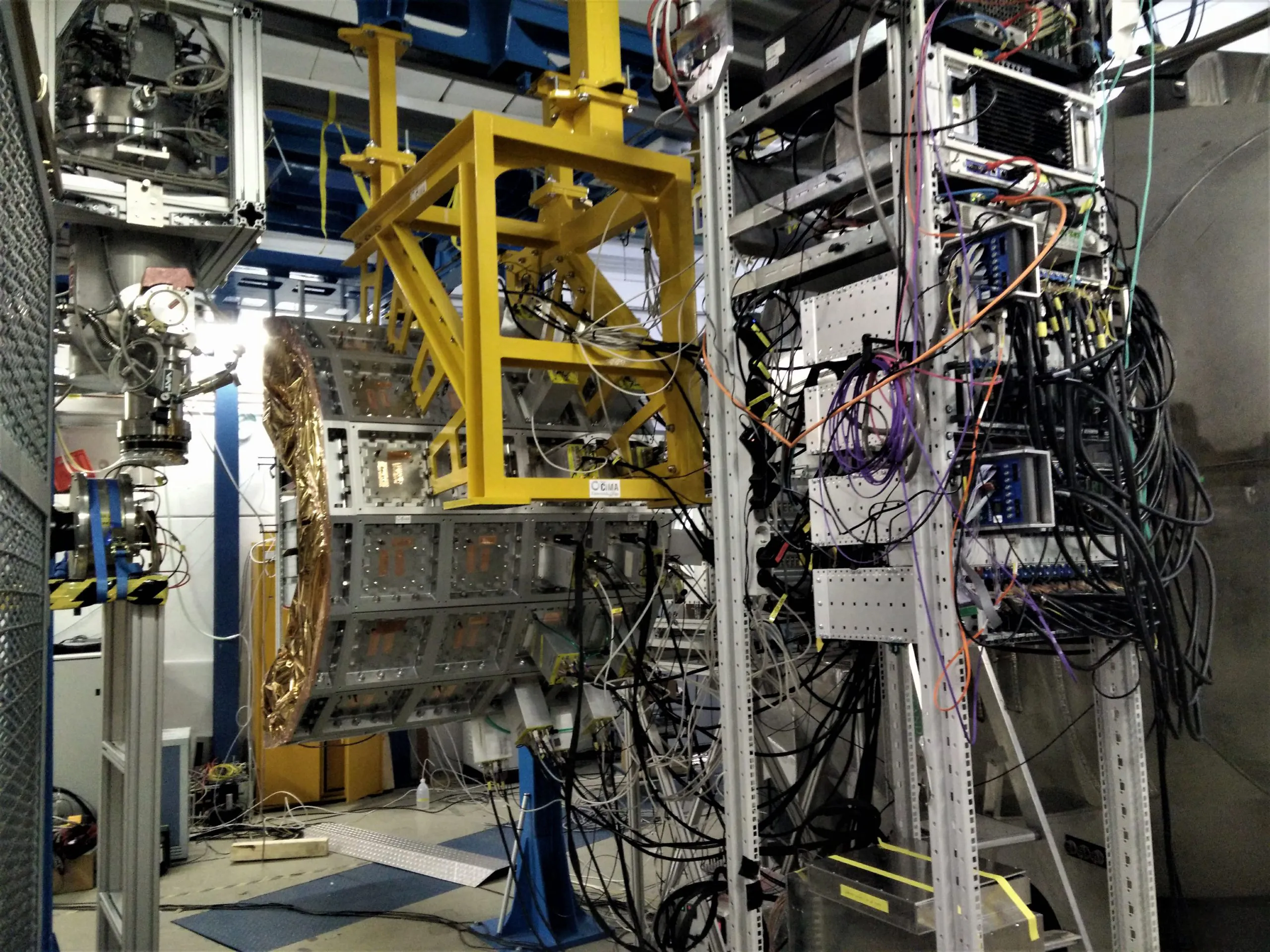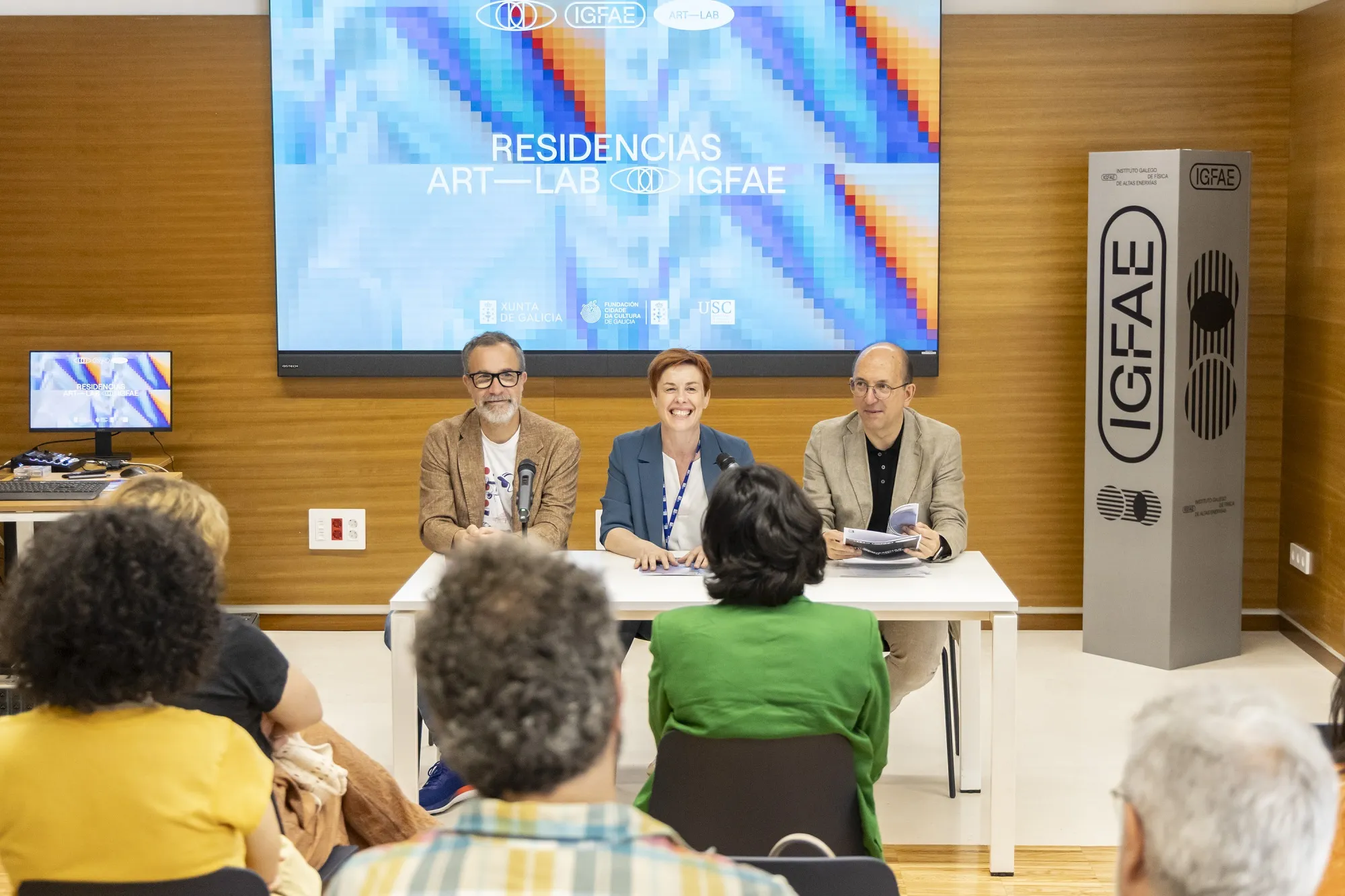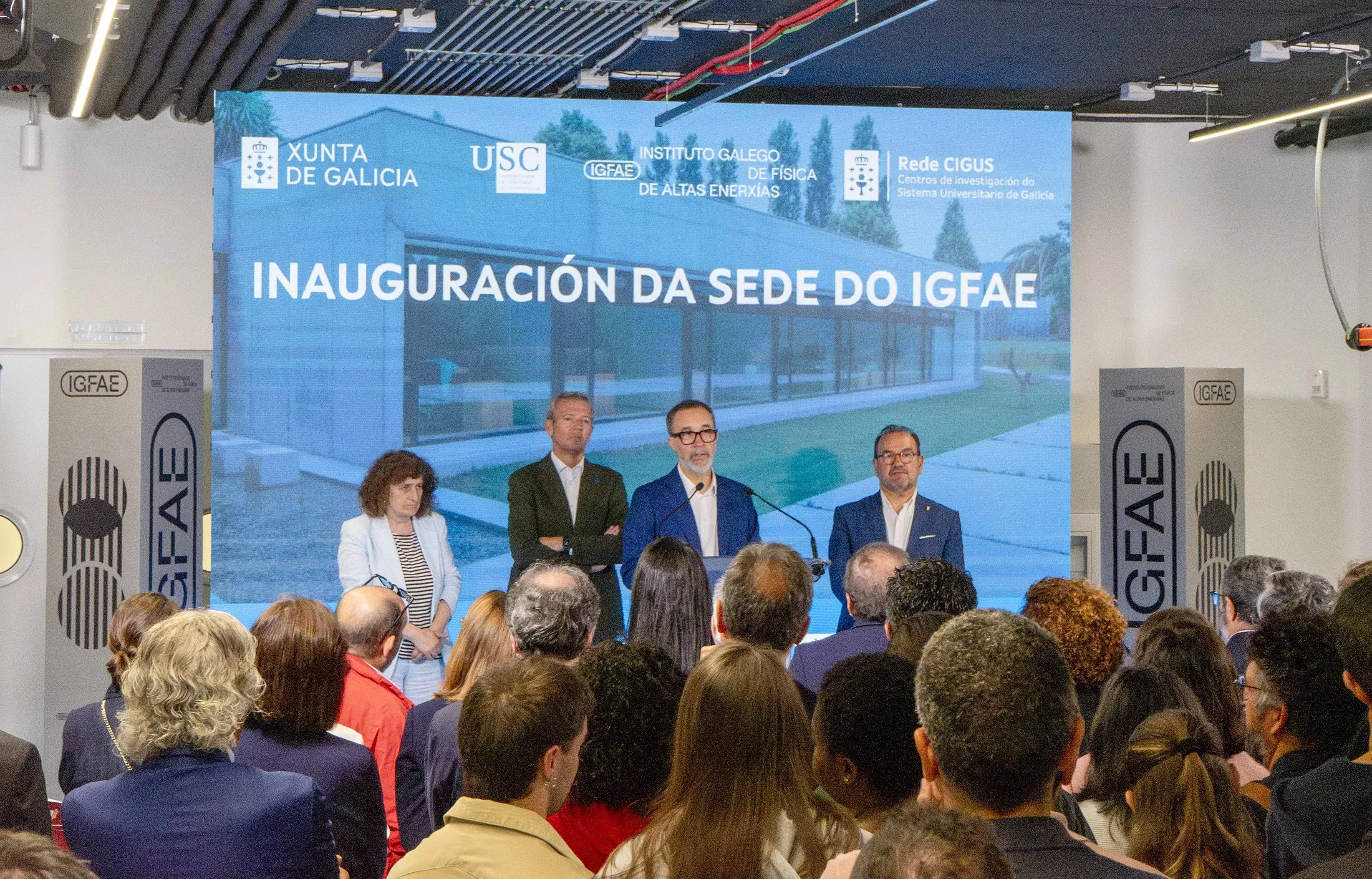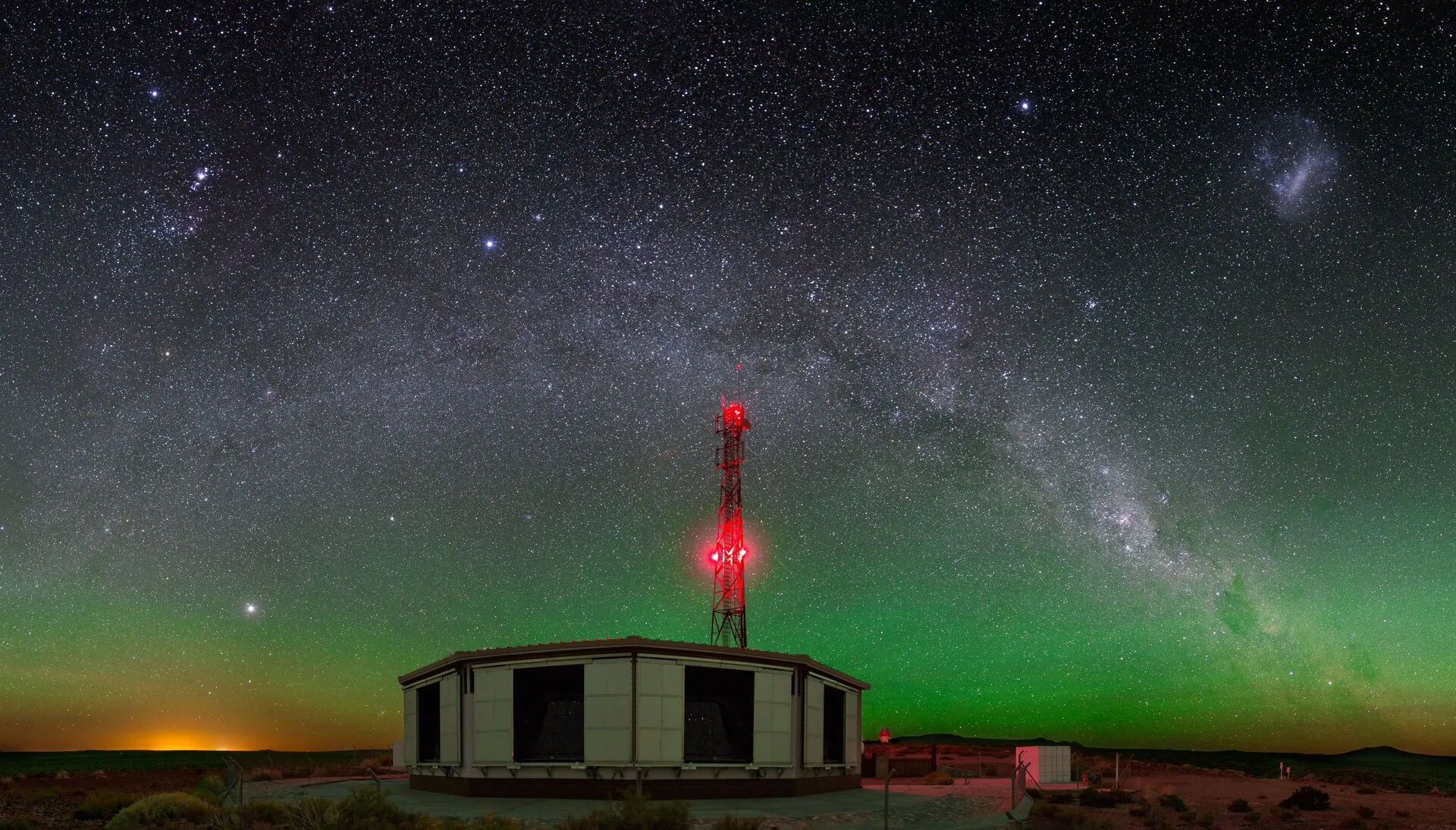Este detector, cuxo deseño e construción foi liderado polo Instituto Galego de Física de Altas Enerxías (IGFAE), estudará a estrutura de núcleos atómicos “exóticos” no laboratorio de investigación nuclear FAIR, unha das infraestruturas científicas estratéxicas da Comisión Europea. No deseño e construción da estrutura mecánica de CALIFA tamén participou a Universidade de Vigo e varias empresas galegas.
CALIFA xa está instalado no experimento R3B do acelerador FAIR, en Darmstadt (Alemaña), unha das instalacións científicas europeas de referencia en física nuclear. Tras finalizarse o seu deseño e construción, a posta en marcha de CALIFA permitirá realizar experimentos de precisión aproveitando as vantaxes dos primeiros feixes de ións acelerados en FAIR. Con eles, estudarase a estrutura e dinámica de núcleos atómicos inestables ou exóticos a partir de 2020.
O IGFAE participa desde fai máis dunha década na colaboración R3B (Reactions with Relativistic Radioactive Beams), formada por 230 persoas de 15 países e coordinada desde maio de 2017 pola investigadora do IGFAE e profesora da USC Dolores Cortina. O seu grupo liderou entre 2005 e 2017 o deseño e construción do seu detector, CALIFA (CALorimeter for In-Flight detection of gamma- rays and high energy charged pArticles), un novo calorímetro capaz de detectar simultaneamente partículas cargadas e radiación gamma, cubrindo un rango enerxético sen precedentes: dos kiloelectrónvoltios (KeV) ás centenas de megaelectrónvoltios (MeV). Cabe destacar que a tecnoloxía de detección utilizada neste tipo de detectores, así como as técnicas de reconstrución da información que se recada, son comúns coas que se desenvolven en imaxe médica e son útiles para o diagnóstico de enfermidades.
R3B utilizará ións radioactivos a velocidades próximas ás da luz e permitirá desenvolver un amplo programa de investigación que abordará cuestións cruciais para a física nuclear, como o estudo de propiedades fundamentais dos núcleos atómicos e da forza responsable de unir os protones e neutróns que os forman, ademais de reproducir as reaccións que teñen lugar nas estrelas, responsables de xerar a súa enerxía e crear os elementos que vemos no Universo.
Un “CALIFA” moi galego
Na construción de CALIFA, cuxo custo supera os 3,5 millóns de euros na súa primeira fase (22% dos cales foron financiados con fondos captados por este equipo) e máis de 5 millóns de euros en total, participou persoal investigador de Alemaña, Suecia e Rusia. Dentro de España, a contribución galega foi notable. Desde 2005, o IGFAE colabora co grupo CIMA de enxeñería mecánica da Universidade de Vigo, quen foi artífice do deseño da estrutura mecánica do detector. Ademais, empresas galegas especializadas encargáronse da fabricación de fibra de carbono, mecanizado de precisión e metroloxía. O outro grupo español de CALIFA é do Instituto de Estrutura de la Materia (IEM-CSIC), centrado en desenvolver os centelladores innovadores da parte frontal do detector que recibirán unha enorme cantidade de radiación e onde a resolución en enerxía xoga un papel moi importante.
FAIR (Facility for Antiproton and Ion Research) é un novo centro de investigación internacional prioritario para a Comisión Europea, incluído na folla de ruta ESFRI 2018 que identifica as instalacións científicas prioritarias de interese paneuropeo. Un consorcio internacional contribúe a financiar os 1.500 millóns de euros que custará este laboratorio equipado cos máis potentes aceleradores de antiprotones e ións pesados do mundo. Alí, máis de 3.000 persoas de 50 países estudarán a estrutura e propiedades da materia visible que forma o Universo, desenvolvendo labores de investigación básica e aplicada no campo da física nuclear. En España, participan máis de 50 investigadores do CSIC, o CIEMAT e as universidades Complutense de Madrid, Granada, Huelva, Politécnica de Barcelona, Sevilla, Santiago de Compostela e Vigo.
Membros do equipo IGFAE:
H. Álvarez Pol, J. Benlliure Anaya, P. Cabanelas Eiras, D. Cortina Gil, G. García Jiménez, D. Gonzalez Caamaño, M. Feijoo Rodríguez e J. L. Rodríguez Sánchez.
Membros do equipo UVigo:
Enrique Casarejos, José Antonio Vilán, Abraham Segade, Angel Vilán, Marcos López e Pablo Izquierdo.
Membros do equipo IEM-CSIC:
M. J. García Borge, O. Tengbland, E. Nácher e A. Perea.
Máis información e contacto:
- Dolores Cortina. Instituto Galego de Física de Altas Enerxías (IGFAE) – USC: cortina@usc.es y 600942337.
- Nota de prensa da posta en marcha dos aceleradores de FAIR: http://www.gsi.de/en/start/news/details/2018/06/21/beam_on_accelerator_operation_restarts_experimental_time_is_being_prepared.htm?no_cache=1&cHash=ddcf3be72757e00b88febfbbaeb0da2
- Colaboración NUSTAR: http://www.r3b-nustar.de/index.php
Imaxe: vista da linea de feixe do CALIFA desde a esquerda en FAIR. Créditos: IGFAE.






